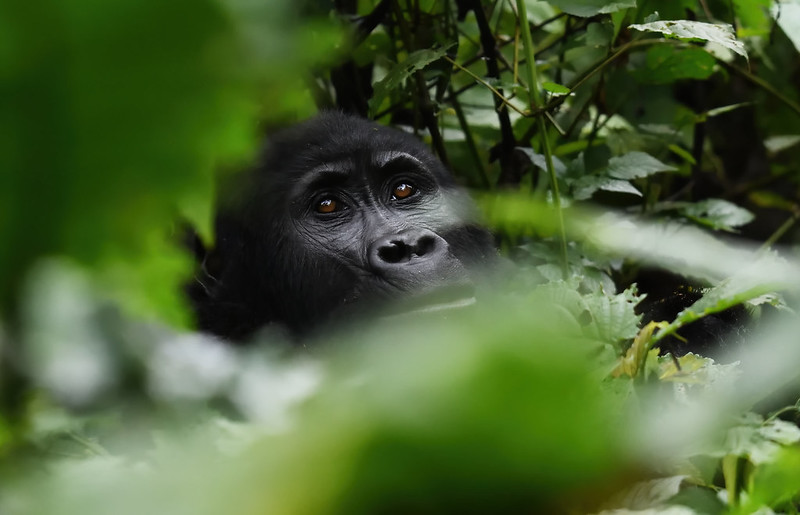Eco Tourism saving Mountain Gorillas in Africa
Looking back over the last four decades since gorilla conservation efforts began, the fight to rescue Africa’s mountain gorillas has been a difficult struggle. Since the advent of gorilla tours in Africa, mountain gorillas have been found in the Virunga volcano region in the country’s east.
This area has a history of rebel militia incursions, which has made the locals and park rangers feel extremely unsafe. At least they knew where to walk without fear of falling into traps and avoiding land mines. Naturally, gorillas are untamed creatures who roam freely throughout the forest in pursuit of food, such as bamboo and leaves, and eventually fall into traps created by rebels.
The silverback gorilla
By the 1970s, many causes were threatening the survival of the mountain gorilla population, putting these magnificent primates in danger of becoming extinct. To preserve the gorilla population, many elements have to be addressed in addition to anxieties.
Gorillas are forced to travel continuously due to poaching and forest land encroachment; diseases
Illegal Trade in Gorillas
In order to develop solutions to prevent gorillas from being abused or becoming extinct, American primatologist Dian Fossey founded a study facility. He was a pioneer in the effort to conserve mountain gorillas in Africa. Between the Karisoke and Visoke mountains in Rwanda, she established a gorilla research station.
Dian Fossey first battled poachers at a high altitude to preserve gorillas. Although Dian Fossey was subsequently killed by poachers and buried at her Karisoke center, her message of protecting endangered mountain gorillas attracted international attention and convinced the relevant governments of the need of practicing responsible ecotourism in order to save Africa’s mountain gorillas.
Today, all issues threatening mountain gorillas have been resolved, and a great deal of work has been put into their protection. The number of gorillas in central and eastern Africa has increased from fewer than 250 to over 1000.
How are gorillas being saved by ecotourism?
According to Dain Fossey, the only way to conserve gorillas would be to introduce gorilla tourism. It would be simple to handle the financing of conservation programs using the foreign currency generated by gorilla safaris.
It should be mentioned that gorilla excursions are a significant source of revenue for the nations that are home to gorillas. For instance, from 2006 to 2013, almost a million visitors visited the mountain gorillas in Uganda, Rwanda, and Congo, bringing in $75 million (£44 million) and accounting for about 90% of the nations’ yearly foreign exchange earnings.
The government of Rwanda implemented an annual profit-sharing program in 2005, whereby five percent of the proceeds from gorilla tourism are reinvested in underprivileged local communities near national parks to support local project development initiatives aimed at raising their standard of living, such as building roads, water and sanitation systems, health facilities, and low treatment costs. It should be mentioned that the areas around national parks have a high population density, inadequate sanitation, and high rates of poverty.
Because gorilla conservation benefits everyone, the community becomes completely invested in it via such profit-sharing programs.
introduction of stringent regulations that all visitors to Rwanda, Uganda, and Congo must abide by in order to see gorillas. Because gorillas have a limited immunity to human illnesses, these regulations were put in place to safeguard the endangered mountain gorilla species from hazards including human-caused diseases like influenza, diarrhea, and TB, which may be fatal if they are captured.
Rules for Gorilla Trekking
When you’re unwell, don’t hike gorillas. Tourists may postpone or obtain a refund for their gorilla permit if they report to the park headquarters feeling unwell. If you need to cough, blow your nose, or sneeze when among the gorillas, do it away from them. They are very vulnerable to human illnesses.
Visitors and gorillas must keep a tight distance of five to seven meters. This is to safeguard both tourists and gorillas.
To avoid wearing out the gorillas, only a group of eight individuals is permitted to spend an hour with a single gorilla family.
Avoid eating, drinking, and—most importantly—leaving trash in the gorilla habitat while there are gorillas about.
Every piece of land in the national park has been marked off and shielded against residential development. Since mountain gorilla tourist profit sharing was implemented, gorilla habitat violations have been avoided and gorilla protection has become a shared duty.
In conclusion, one would concur that the history of gorilla tourism has learned from Dian Fossey’s time and has not forgotten anything, given the current steady rise in gorilla population numbers as evidenced by the most recent ongoing gorilla census in the Virunga region and Bwindi Forest National Park.
